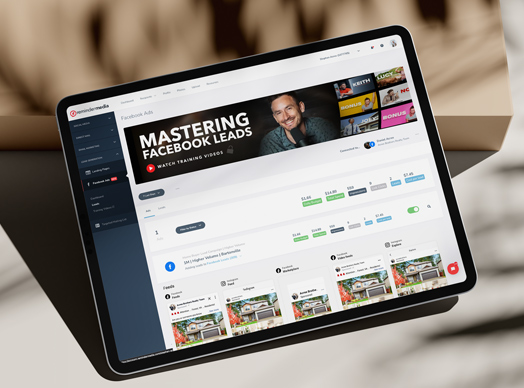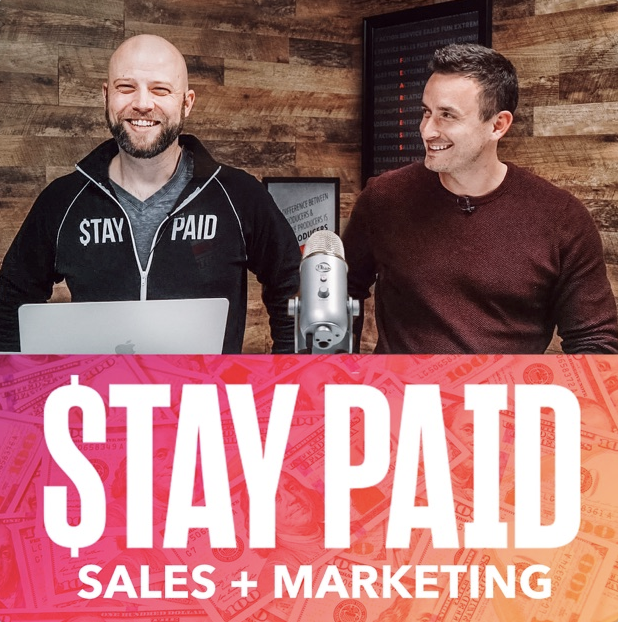Randy Dickinson is a marketing expert who has collaborated with hundreds of financial professionals, charities, and other organizations.
Today on Stay Paid, Randy discusses the StoryBrand technique, how to craft a compelling elevator pitch, and concrete steps you can take to make your business more marketable.
Key Points
- Know your brand story and be able to tell it concisely.
- Understand your audience and know what they want.
- Position yourself as the guide your clients are looking for.
Q: Introduce yourself to our audience.
When I got started, Windows didn’t even exist.
I used to work in the sales world with oil companies, but it wasn’t very personal. After that, I got into the insurance business and started my own agency. I wound up selling my agency, and then I moved into financial services.
Later on, I encountered the StoryBrand model and wound up incorporating that into what I do.
Q: Give us an overview of the StoryBrand model.
It starts out with a character—he could be your client.
That character has a problem, which is expressed in a couple of ways. If you’re not willing to figure out what the root of the problem is—the philosophical problem—you’re missing out on an opportunity to set yourself apart.
How do you set yourself apart? A lot of people think they’ll just build a bigger, better product. The problem is that everybody else starts coming up with the same solution, and the only way you can compete is on price.
Think about Yoda and Luke Skywalker. Yoda always knew what to do. Luke would always end up going back to his guide to find out what to do. You and I want to be the guide—not the hero.
The only way the client cares about what we have to say is if it relates to what they care about. If someone needs to sell their house in two days, they need you to be the person who helps them do that.
With StoryBrand, if you confuse, you lose. Ideally, you only want to have about three steps to what you do. The easiest way to grow your business is to clarify your message.
For example:
- Answer questions
- Show a few houses
- Give them the keys
People don’t want to read 50 testimonials. All they want to know is that someone is trustworthy. A video testimonial is useful for this reason.
Once you’ve identified the plan for the problem you’re going to solve, there’s a call to action. This could be to download a report, book an appointment, or watch a video. This call to action will either result in success or in failure.
When I’m speaking to clients, there’s a fine line between bragging and being honest. I’ll tell people they can work with a lot of other people who will tell them a lot of things, but nobody will tell them exactly what I will. There’s a cost if they don’t work with me, and they need to be very clear about what that is.
On the other hand, if your audience doesn’t need you, there are many other people they can work with. That’s why you need a compelling story that will make people want to work with you. Your offer needs to relate to what they care about.
Then there’s the idea of a progression. You want to take your client from pain to pleasure. You’re the guy who has a plan with a call to action, an idea of what success looks like, and the progression that takes someone from here to there.
Q: What is the first thing a real estate agent should do when they’re trying to tell their story?
The first thing you want to do is to understand the people you do business with. All most people care about is the price and the condition of the house. You need to know your audience—what it is that they care about.
This starts by asking questions. If you’re at an open house, ask why they stopped by the open house today. Go on Facebook and look up local groups. Find out the questions people are asking about real estate.
There’s a real estate agent I know in San Clemente, California. She knows everything about the area. This would be irrelevant to people where I live in Orange County, but it’s relevant to her audience.
Q: How does someone position themselves as the right person for their audience?
The one-liner concept. Some people call it an elevator speech.
I did this with a real estate agent not too long ago. When I met him, I had no interest in buying or selling a house. He wasn’t earning my business because he wasn’t positioning himself as a guide.
When you position yourself as a guide, you start out by stating the problem. Pose the problem, say what you can do to fix it, and then explain what happens afterwards.
Think of each StoryBrand step as a sentence. When you’re done, you have a 14-sentence brand script that permeates your branding—throughout your website, your emails, and anywhere else people see your brand.
What if that real estate agent had positioned himself as someone who helps educate homebuyers so that they can afford to buy a home? That would have made such a difference.
Today in the marketplace, people hear a lot of noise. They give credence to people they’ve never hired and won’t pay. They also can’t fire those people or invoke consequences—and yet, they listen to those people all the time.
People have narratives they listen to. If you don’t know what they will care about in the future, how can you be relevant? Becoming a guide is understanding the future that your people care about.
If you really want to set yourself in business, don’t just learn the steps—learn how to internalize them. Information just fills your head. If all you’re doing is projecting information, you’re not leading people anywhere.
I’m always amazed when I see FSBO signs. I ask people how it’s going for them. People say it’s harder than they thought it’d be, but agents aren’t approaching them because they see them as competition. Why not call those people or knock on the door and ask if there’s anything you can do to help?
You know that most of those people probably aren’t going to sell their homes themselves. But, even if they do, they’ll need someone to help them down the line. Why not help them now?
Q: Tell us more about what you call “Beyond StoryBrand.”
If you can’t define trust, you can’t create it. Trust is an assessment that I make about you—that you’ll do something in the future that relates to what I care about.
There are things we do every day that break trust without us realizing it, because we don’t really understand what trust is.
There’s also the idea of seduction. There’s a positive possibility out there for you in the future. How do you seduce your clients into believing that you can help them in the future? If you do that while everyone else is throwing out the same old ideas, you’ll win the majority of those clients.
Once you have a story, you need to think about how to begin implementing that. You want to stand out beyond the noise. I’ll help you understand these dynamics so that you can build trust in new ways.
When you’re creating a new product, don’t name it after your company. Create a new name, along with a new offer that goes with it.
Q: What advice would you give to your younger self?
I would tell myself that there is so much information around me, and that I need to learn to use that information to solve problems. All of these innovative devices and technologies we see today exist because people wanted to solve problems.
Action Items:
- Complete Randy’s one-liner exercise.
Connect with Randy:



















 Soundcloud
Soundcloud iHeart Radio
iHeart Radio Spotify
Spotify Spotify
Spotify


